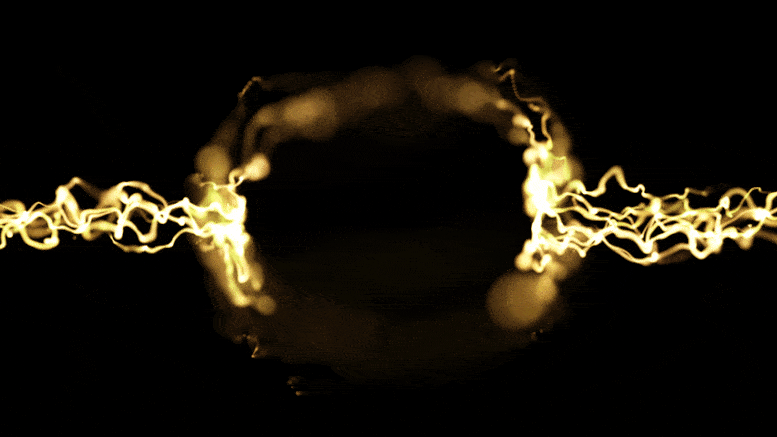
As graphene permits the Schwinger effect, cosmic physics is replicated on a tabletop
The so-called Schwinger effect, which generally only happens in cosmic events, has been seen by researchers at The University of Manchester. The National Graphene Institute’s team succeeded in creating particle-antiparticle pairs from a vacuum by applying strong currents via specially built graphene-based devices.
A vacuum is thought to be a fully empty space that is devoid of all matter and fundamental particles. However, Nobel Laureate Julian Schwinger predicted 70 years ago that powerful electric or magnetic fields might spontaneously break down the vacuum and form elementary particles.
This necessitates really cosmic-strength fields, such as those seen near magnetars or those generated transitorily during high-energy charged-nuclei collisions. Experimenting on these theoretical predictions has long been an aim of particle physics, and several are now being planned for high-energy colliders throughout the globe.
The scientific team has now utilized graphene to duplicate the Schwinger creation of electron and positron pairs, pioneered by another Nobel laureate, Prof Sir Andre Geim, in conjunction with colleagues from the United Kingdom, Spain, the United States, and Japan.
They write in the January 2022 edition of Science that carefully engineered devices, such as tiny constrictions and graphene superlattices, enabled them to create very powerful electric fields in a simple, table-top arrangement. The spontaneous creation of electron and hole pairs (holes are a solid-state counterpart of positrons) was clearly seen, and the process’ specifics matched theoretical expectations.
The researchers also discovered another unexpected high-energy activity with no precedent in particle physics or astrophysics. They accelerated electrons to the highest velocity permitted by graphene’s vacuum, which is 1/300 of the speed of light, in their mimicked vacuum. Something apparently unthinkable occurred at this point: electrons seemed to become superluminous, delivering an electric current greater than permitted by conventional quantum condensed matter physics principles. This phenomenon was described as the result of the spontaneous production of extra charge carriers (holes). The study team’s theoretical account of this process differs significantly from Schwinger’s for empty space.
“Electronic characteristics are frequently studied using small electric fields, which allows for simpler investigation and theoretical explanation. “We wanted to push the intensity of electric fields as far as possible using various experimental tactics in order to avoid burning our gadgets,” stated Dr. Alexey Berduygin, the paper’s first author.
“We merely wondered what may happen at this extreme,” said co-lead author Dr. Na Xin. The Schwinger effect, rather than smoke pouring from our set-up, surprised us.”
“When we initially discovered the remarkable features of our superlattice devices, we thought ‘wow… it may be some form of novel superconductivity,” said Dr. Roshan Krishna Kumar, another key contributor. Despite the fact that the reaction resembled that of superconductors, we quickly discovered that the perplexing behavior was not superconductivity but rather something related to astrophysics and particle physics. It’s fascinating to notice connections across seemingly disparate areas.”
The study is especially significant for the development of future electronic devices based on two-dimensional quantum materials, since it sets limitations on graphene wiring, which was previously recognized for its extraordinary capacity to support ultra-high electric currents.

